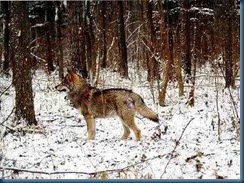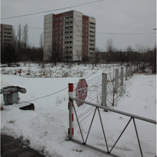CHERNOBYL’S LOST CITY - COME WALK WITH ME IN THE LAND OF WOLVES
In light of the the current crisis at the Fukushima Nuclear Reactor…Choose your future carefully! It is you who has to live in it!
“We walked into a wasteland, grey and desolate. The buildings had deteriorated, windows had been smashed. Trees and weeds had grown over everything. It was a ghost town.” (Pripyat) 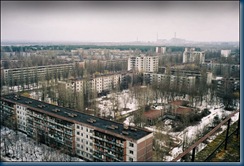
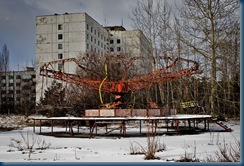
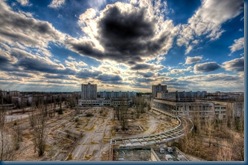 Image Credit: timmsuess.com
Image Credit: timmsuess.comAlong with Anders Møller, an ornithologist and evolutionary biologist from the Pierre and Marie Curie University in Paris, Tim Mousseau has conducted on-site research into the effects of radiation on humans and animals, with highly controversial results.
The basic facts of the Chernobyl nuclear power station accident in the Ukraine — the worst in history are well known. At 1.23am on April 26, 1986, reactor number four at the Soviet nuclear power plant exploded, after an electrical test went horribly wrong. The radioactive material released was many times greater than the fallout over Hiroshima and Nagasaki, polluting about 80,000 square miles of land across Europe and spreading radioactive rain as far as north-west Ireland. In the wake of the accident, more than 300,000 people were evacuated and an 800 square mile exclusion zone created around the reactor – “the zone of alienation.”
LIVING IN THE SHADOW OF THE RUINED REACTOR – THE LAND OF WOLVES
Pripyat was built as a town for the Chernobyl power station workers. It was viewed a model town. The apartment blocks were alive with fir trees and rose beds. It was a town of young people and growing families.25 years on the abandoned town of Pripyat has become a wildlife haven. The Land of Wolves.There have been sightings of wolves, bears, wild boar and moose wandering the deserted streets, and swifts swooping round abandoned office blocks. Likewise sightings of deer and wolves have been reported at Kiev Oblast, situated near the border with Belarus, in the zone of alienation in Northern Ukraine. The only other resident is a solitary guard. Prior to the accident the population had been around 50,000.
The site of the Red Forest remains one of the most contaminated radio-active sites in the world today.
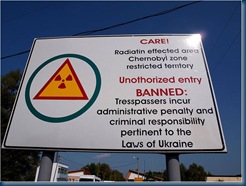
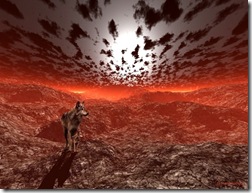
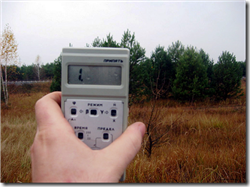
Although radiation levels have dropped significantly since 1986, there are still "hot" regions. the most contaminated areas measuring 300 microSieverts per hour on the Geiger counter, the equivalent of 1,200 times normal radiation levels.
VEGETATION
Therefore it is surprising the vegetation in the zone of alienation has flourished. Like a strange nature reserve, flora and fauna, in the absence of human interference have reclaimed the abandoned land. Scientists have found that since 1990, growth flourished and the ecological effect has been positive. Eighty percent of the zone is now forested; before the disaster, it was just 20 percent. A total of 240 species of animals have been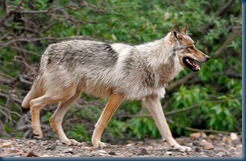
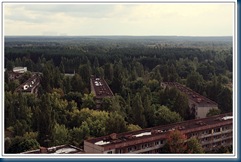
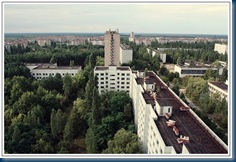
counted within the exclusion zone, most of which were present only in low numbers before the disaster. Giant catfish swim in radioactive water that surround the six nuclear reactors. Since nobody is going to go fishing, they’ll continue to breed and grow.That one should never eat the mushrooms or berries found there and that some of the clover might have six leaves is however another story.
So, could it be that if wildlife can return so soon, nuclear radiation and power might not be as dangerous as we first thought?
AN ECOSYSTEM IN CRISIS
The first discovery that Professors Møller and Mousseau made was that birds in the fallout zone were suffering increased levels of genetic mutations. The examination of 20,000 Barn Swallows found crippled toes, deformed beaks, malformed tails, irregularly shaped eyes and tumours. Some birds had red plumage where it should have been blue, or blue where it should have been red.Because of contaminated food supplies, bird species have declined by more than 50 per cent in high-radiation areas. Only a fraction of the Swallows and Great Tits are reproducing, and of those that do lay eggs, only five per cent hatch. Less than a third of birds survive to adulthood. Professors Mousseau and Møller could confirm that these abnormalities were genetic by examining the Swallows' sperm.
They discovered a connection between antioxidants, radiation and plumage colour: showing birds with the brightest plumage are more likely to die. Antioxidants in both humans and birds, help counteract the effects of radiation Brightly plumaged birds migrating long distances eg Swallows, produce a lot of free radicals as a by-product of their very high metabolic rate and , resulting in tissue damage ~ Professor Mousseau.
Supplies of antioxidants in their blood and liver offset this. Large amounts of antioxidants are directed to the female’s eggs, causing the bright yellow yolk. If their destination is in highly contaminated areas, they find it impossible to replenish energy reserves preventing Swallows from maintaining their bright plumage or re-directing enough antioxidants into their eggs, so few chicks hatch.
It continues down through the food chain. In the areas of highest contamination, fewer butterflies, bumblebees, grasshoppers, dragonflies and spiders are found. "The fact that insects, including pollinators, are sensitive to elevated contaminants has a significant impact on the rest of the ecosystem," ~ Professor Mousseau.
There is also another tragedy here. Professor Mousseau has started working with the Hospital for Radiation Biology, in Kiev, on a long-term study of humans who live in the area: more than 11,000 adults and 2,000 children in the Narodichesky region, 50 miles from Chernobyl.
The incidence among locals of cancer, birth defects and reduced lifespan is alarmingly high. What will be the consequences for the children of these children????
You have walked with me through the Land of Wolves…There will, without doubt, be many and varied opinions on the use of nuclear energy as a “safe, clean, low-carbon” energy source. But the hard, cold fact that remains seems to be that we cannot live WITH it and yet neither can we live WITHOUT it.
I for one, just hope that we too, do not end our days “Walking in the Land of Wolves.”
Technorati Tags: Fukushima,Chernobyl,Pripyat,Wolves,Nuclear reactor,Children,Genetics,Wildlife,Radiation,Radioactive
